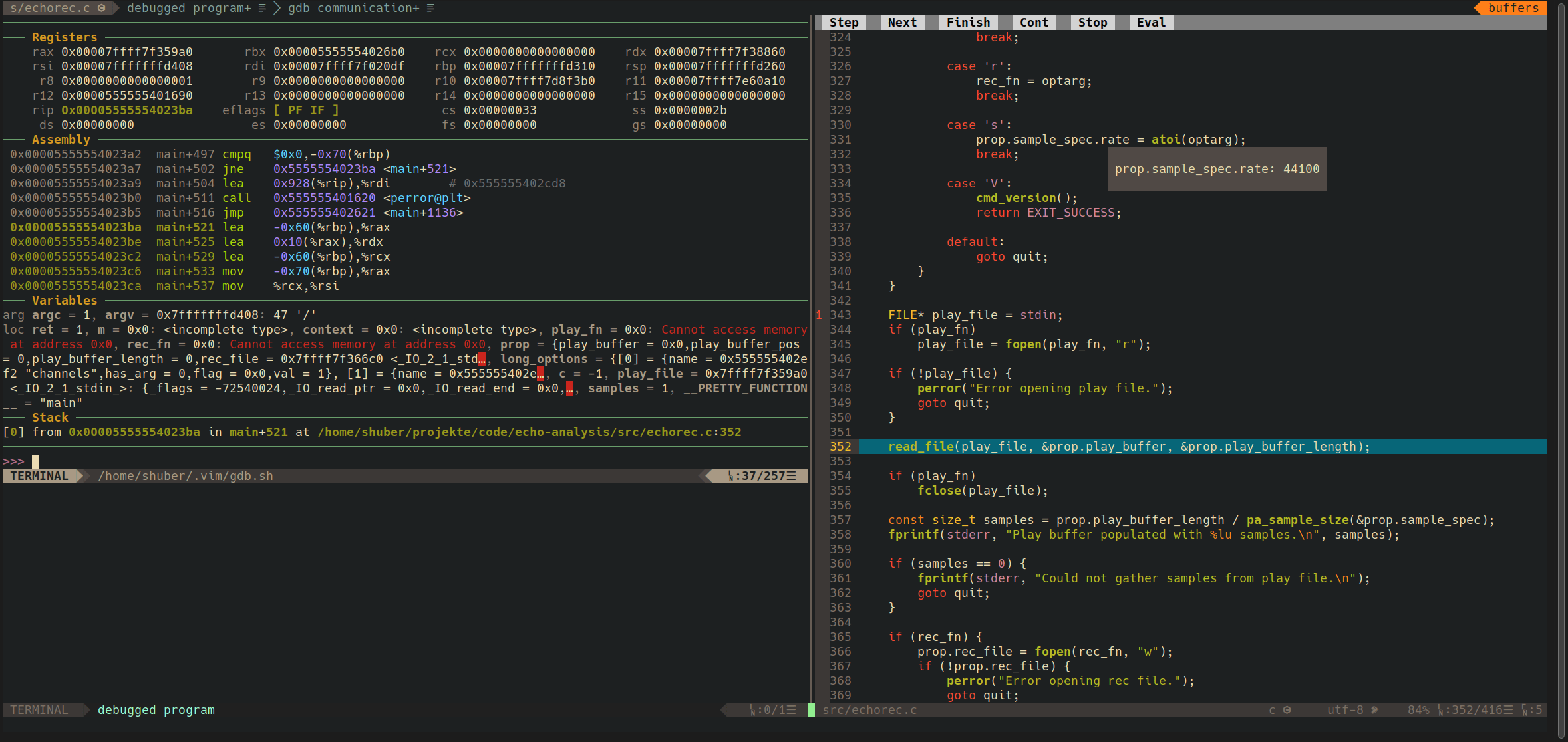

- #How to install gdb dashboard how to#
- #How to install gdb dashboard windows 10#
- #How to install gdb dashboard pro#
- #How to install gdb dashboard download#
#How to install gdb dashboard download#
Go here, scroll down, and click download by state.
#How to install gdb dashboard pro#
Second, your machine has an updated ArcGIS Pro install.
#How to install gdb dashboard windows 10#
First, you are working on a Windows 10 machine. There are a couple prerequisites for the instructions in this article to keep things simple. Nor will we touch on Spatial DataFrame objects here. We will not, for instance, use the function FeatureClassToNumPyArray in ArcPy’s Data Access module to get DataFrame objects in one shot.
#How to install gdb dashboard how to#
The goal is not to create an efficient workflow, but to understand how to move the information between formats with Jupyter Notebook. We will download a sample geodatabase, download some code, do a little housekeeping, and run the code. This article walks through using GIS data in Jupyter Notebook for the first time. In fact, Esri now ships Jupyter Notebook with its software. Many data scientists use this tool, and because GIS data is just data with a spatial component, you can use it too. It is an easy way to work with data programmatically, repeat the work, and share it. Give them a shot! I'm sure one of these will work for you too.Jupyter Notebook is an increasingly popular open-source web application used by all sorts of people for all sorts of purposes. Honestly, I use all of them, swapping GDBInit files whenever I get tired of one. How to build xds-gdb from scratch Dependencies. Overall, they're all really powerful, and will make your time in GDB more efficient. Build Using the XDS Dashboard Build Using an IDE Overview Configuration Using the Command Line Using an IDE Abstract Prerequisites Abstract Build from scratch Configuration How to run. It has what seems to be the most invasive installation though, installing a significant number of python libraries, as well as python 2. PwnDbg is similar to GEF and gdb-dashboard, but has a bit more of a cybersecurity bent, integrating things like ropper into the GDB command line. As far as I can tell, this is the only GDB extension that has this particular feature.

It provides the ability to display the dashboard or individual modules of the dashboard in other terminals, which is very powerful and makes the overall layout surprisingly customizable. I found it easy to use overall, and not too invasive to install. This seems to be the most active project today, as it was just updated while I was writing this.

Gdb-dashboard uses GDB's python API to improve the overall user experience. GEF, gdb-dashboard, and PwnDbg all use a somewhat similar interface overall. I did have problems with paging not working as I would have expected though. I found the layout easy to use and it helped me understand the structure of programs I was working with. It will show disassembly, the state of the debugging session, active threads, and source code, if available. It also shows the current stack state, again dereferencing pointers for easy data access. It shows registers, automatically dereferencing pointers. It has a layout positioned just above the command line where you can enter typical GDB commands. GEF shows most any information you'd need and has a very similar layout to what you'd see in a graphical binary debugger. Pretty much everything other than that belongs to RobTopGames. These features still work locally and on private servers. In this case you can add your feature classes like this: 08-08-2018 08:47 AM. Level analysis, daily levels, and downloading extra info will not work until he chooses to unblock downloads. GEF (pronounced 'Jeff') is a powerful, but still lightweight, configuration for GDB. You can also go through your geodatabase using the geodatabase API first. I still recommend this configuration, as it's easy to install, and it's a great entry point for GDB customization.

What I really liked about it was that it was lightweight and showed me most everything I needed to see after each step. I started using it then and really enjoyed it. This, or something very similar to it, used to be packaged in BackTrack Linux (the precursor to Kali Linux). They're GDBInit from OSXReverser, GEF, gdb-dashboard, and PwnDbg. Specifically, they're a few projects hosted on GitHub, and they've made GDB much faster for me to use, and I was pretty comfortable there, to begin with. So, I've been working on a few different projects over the past few months that make this a bit easier. And, you can't really tell where the valid pointer is, and ARRRRRRGGGH I JUST HIT 'N' NOT 'SI' SO I NEED TO START OVER. I mean, so you can see what's in EIP, it seems okay, but you need to trace a value at the end of some pointer chain staring in RAX. GDB is very powerful, but the commands can be difficult to keep in mind. If you're working in either IoT or cybersecurity, you're likely using GDB (and LLVM, WinDbg, and so on).


 0 kommentar(er)
0 kommentar(er)
